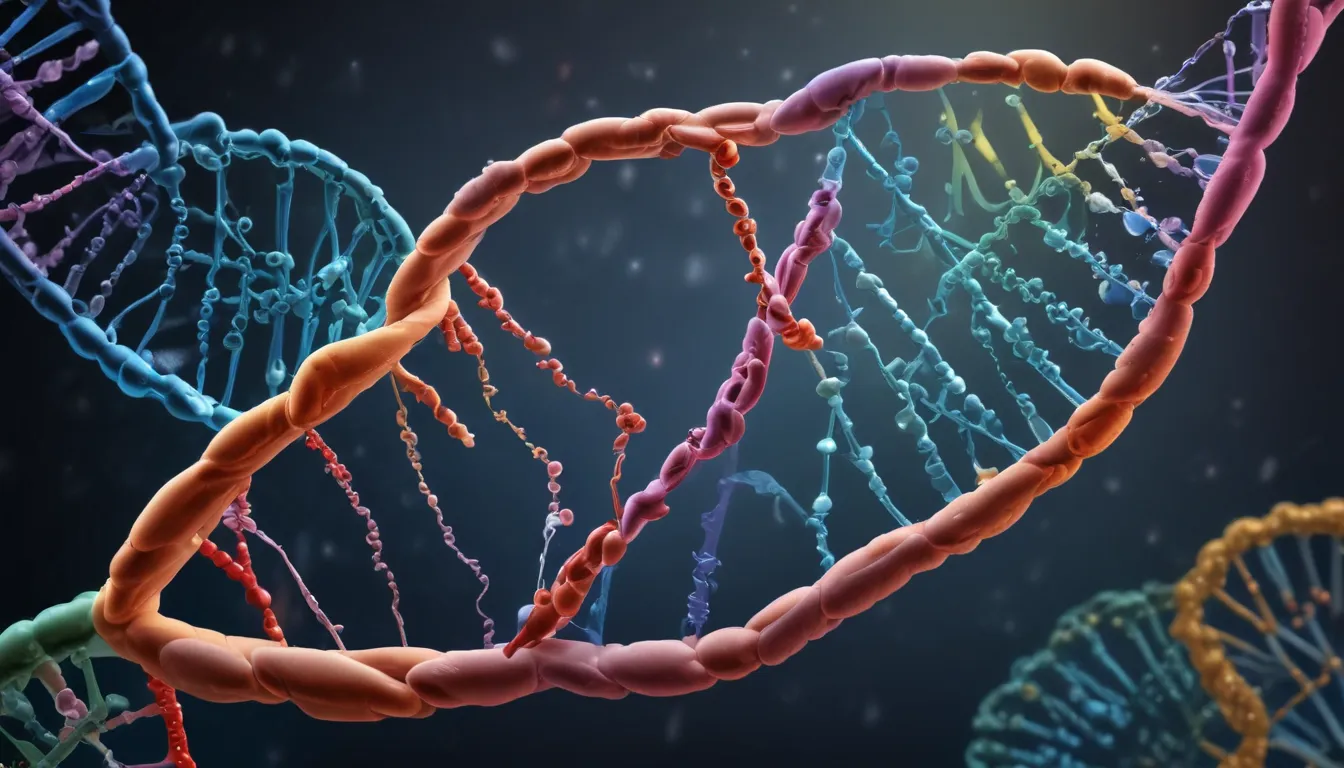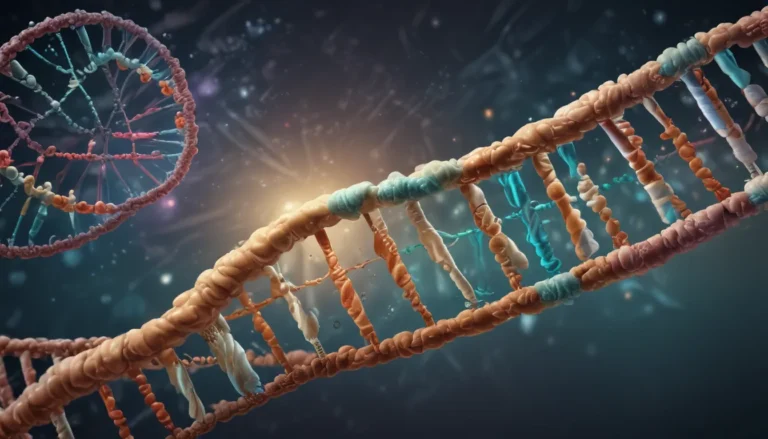A Note About Images: The images used in our articles are for illustration purposes only and may not exactly match the content. They are meant to engage readers, but the text should be relied upon for accurate information.
Welcome to the captivating world of DNA topoisomerases, the remarkable enzymes essential for maintaining the integrity and stability of our genetic material. These fascinating proteins play a crucial role in various cellular processes, including DNA replication, transcription, and repair. Join us as we explore the intricate mechanisms and functions of DNA topoisomerases through 16 intriguing facts that shed light on their significance in cellular function and their potential in therapeutic interventions.
Understanding the Role of DNA Topoisomerases
DNA topoisomerases are indispensable for DNA replication, preventing tangling, and aiding in gene expression. They are targeted by antibiotics and anticancer drugs, making them crucial for biological processes and potential therapies. These enzymes maintain genome stability, influence gene expression, and aid in viral replication, with implications in aging, disease, and therapeutic interventions.
Delving into the Mechanics of DNA Replication
During DNA replication, the intertwined double helix needs to be unwound and separated to allow for the accurate copying of genetic information. DNA topoisomerases relieve tension by cutting the DNA strands, allowing the DNA to unwind before resealing the cut ends.
Exploring the Diversity of DNA Topoisomerases
There are two types of DNA topoisomerases: type I and type II. Type I topoisomerases create transient breaks in one DNA strand, while type II topoisomerases create double-stranded breaks. These enzymes have distinct mechanisms and functions but are essential for DNA metabolism.
Untangling DNA Strands: The Role of DNA Topoisomerases
DNA molecules are dynamic and can become tangled or knotted, hindering genetic information flow. DNA topoisomerases help remove these entanglements by cutting and rejoining the DNA strands, ensuring smooth genetic information flow.
Classification of DNA Topoisomerases into Families
DNA topoisomerases are classified into four families: type IA, type IB, type IIA, and type IIB. Each family has unique characteristics and functions, contributing to the overall diversity and complexity of topoisomerase enzymes.
The Crucial Functions of Eukaryotic DNA Topoisomerases
Eukaryotic cells possess several DNA topoisomerases, such as topoisomerase I, II, III, and IV, each with specific roles in different cellular processes. These enzymes contribute to the regulation of DNA structure and function.
The Influence of DNA Topoisomerases on Gene Expression
By controlling DNA supercoiling and structural changes, topoisomerases influence gene accessibility for transcription and binding of regulatory proteins. This regulation is vital for modulating gene expression accurately.
Antibiotics Targeting DNA Topoisomerases
Certain antibiotics, like fluoroquinolones, inhibit bacterial DNA topoisomerases to disrupt bacterial replication and eliminate infecting bacteria. This highlights the significance of these enzymes as potential therapeutic targets.
DNA Repair Facilitated by Topoisomerases
When DNA is damaged, topoisomerases facilitate the repair process by loosening the DNA structure around the damaged site, allowing repair proteins to access and rectify the damage.
Involvement of Topoisomerases in Chromosome Condensation
DNA topoisomerases play a critical role in chromosome condensation during cell division by aiding in the organization and compaction of DNA strands.
Essential Role of DNA Topoisomerases in Viral Replication
Many viruses, including HIV and HBV, rely on DNA topoisomerases for their replication. Targeting viral topoisomerases may offer potential antiviral therapeutic strategies.
Conservation of DNA Topoisomerases Across Species
The fundamental mechanisms and functions of DNA topoisomerases are conserved throughout evolution, emphasizing their crucial roles in maintaining genome stability.
Implications of Topoisomerase Alterations in Human Diseases
Changes in topoisomerase activity have been associated with various human diseases, including cancer, neurodegenerative disorders, and cardiovascular diseases. Understanding their role in disease can lead to targeted therapies.
DNA Knots and Intentional Actions by Topoisomerases
While topoisomerases primarily detangle DNA, they can also intentionally generate DNA knots for specific cellular processes like DNA recombination and chromosome segregation.
Involvement of Topoisomerases in Aging Processes
Accumulation of DNA damage due to altered topoisomerase activity can impact cellular aging processes, emphasizing their role in DNA repair mechanisms.
Molecular Switches: Topoisomerases as Regulators
By modulating DNA supercoiling, topoisomerases can act as molecular switches that regulate the activity of genes or signaling pathways, providing dynamic control over cellular processes.
DNA Topoisomerases as Targets for Anticancer Drugs
Anticancer drugs like topoisomerase inhibitors target DNA topoisomerases in cancer cells, disrupting their ability to replicate and leading to cell death, revolutionizing cancer treatment.
As we conclude our exploration of these intriguing facts about DNA topoisomerases, it becomes clear that these enzymes are indispensable in regulating DNA and have significant implications in various biological processes. The ongoing research in this field continues to unveil new insights into the complexities of DNA biology and offers hope for novel therapeutic interventions.
FAQs: Unveiling the Mysteries of DNA Topoisomerases
-
What is the function of DNA topoisomerases?
DNA topoisomerases regulate the structure and topology of DNA molecules, crucial for processes like replication, transcription, and repair. -
How do DNA topoisomerases work?
These enzymes transiently break one or both DNA strands to relieve torsional stress and control DNA winding and unwinding. -
How many types of DNA topoisomerases exist?
There are two main types: type I and type II. Type I makes single-stranded breaks, while type II makes double-stranded breaks. -
What are the clinical implications of DNA topoisomerases?
Due to their vital role in DNA processes, DNA topoisomerases are targets for certain anticancer drugs, disrupting cancer cell division. -
Are DNA topoisomerases unique to humans?
No, these enzymes are present in various organisms, showing high conservation across evolution due to their critical role in DNA metabolism.
Embark on a scientific journey by unraveling the mysteries of DNA topoisomerases and exploring their vital roles in cellular processes. Each discovery opens new doors to understanding life’s fundamental building blocks. Trust in our commitment to providing accurate and engaging content as you venture into the captivating realm of molecular biology and genetic engineering to expand your knowledge and appreciation for the wonders of the living world around us.






